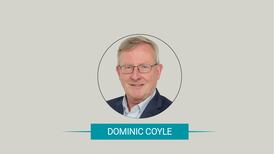Spare a thought for mortgage brokers who, having seen a huge uptick in loan switching in 2022 when the European Central Bank began to hike interest rates, have recorded a drop-off in activity in the period since.
Annual mortgage drawdown volumes fell by 17.2 per cent to 43,587 last year, mainly due to a 63.5 per cent decline in switching activity.
The slump in mortgage activity last year has carried over into the early months of 2024.
The value of approvals for switching activity fell almost 11 per cent on the year in February, according to the latest figures from Banking & Payments Federation Ireland, even though overall approvals have nudged higher. Anecdotal evidence from brokers is that the switching situation hasn’t improved since then.
If you worked in the UK there is an opportunity to boost your pension
Trump trade - a quick guide to US tariff plans
Declining birth rate means there will be fewer people of working age to support the growing number of pensioners
‘The motor industry is changing, but we’re here to stay’: BMW Ireland’s boss on EVs, innovation and the road ahead
A report from the Central Bank of Ireland on Monday on mortgage switching through the turning of the interest rate cycle shows that such activity ratcheted up sharply when the ECB raised rates for the first time in more than a decade. (It would raise its key borrowing rate from zero to 4.5 per cent by the time it was done last September.)
However, it also shows that those who waited for the ECB to move before they did ended up missing peak savings.

Declining electric car sales: ‘depreciation is wild at the moment’
The report found that homeowners could have fixed at an average 1.3 percentage points below prevailing rates — resulting in an annual saving of just under €2,000 — in May 2022. Non-bank lenders that had spurred competition in the Irish market from 2018 generally offered the best rates at the time.
However, non-bank lenders, including ICS Mortgages and Finance Ireland, were forced to start hiking their mortgage rates that very month as their funding costs in wholesale and bond markets soared in advance of official rate increases. The average annual saving available to switchers had fallen to about €1,200 by the end of 2022, the cut-off point for the central bank report.
By then, switching activity was dominated by the three mainstream banks, who source most of their funds from cheap deposits. “We conclude that the propensity of borrowers to switch their mortgage responds strongly to the prospect of expected losses from failure to do so,” it concluded.
Getting borrowers to capture the best rates for themselves when official rates aren’t rising is, however, another matter.
- Sign up for Business push alerts and have the best news, analysis and comment delivered directly to your phone
- Find The Irish Times on WhatsApp and stay up to date
- Our Inside Business podcast is published weekly - Find the latest episode here
















